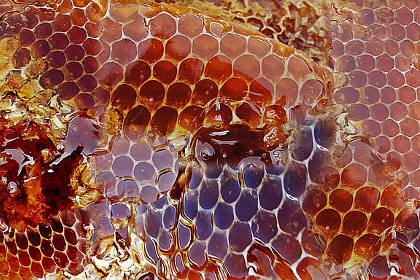
More Bad News for Honey as U.S. Seeks to Get Handle on Glyphosate Residues in Food
Testing for residues of an herbicide developed by Monsanto Co. that has been linked to cancer has turned up high levels in honey from the key farm state of Iowa, adding to concerns about contamination that have triggered at least two lawsuits against honey industry players and prompted scrutiny by regulators.
November 2, 2016 | Source: The Huffington Post | by Carey Gillam
Testing for residues of an herbicide developed by Monsanto Co. that has been linked to cancer has turned up high levels in honey from the key farm state of Iowa, adding to concerns about contamination that have triggered at least two lawsuits against honey industry players and prompted scrutiny by regulators.
The Food and Drug Administration began glyphosate residue testing in a small number of foods earlier this year after the International Agency for Research on Cancer classified glyphosate as a probable human carcinogen in March 2015. The “special assignment,” as the FDA refers to the testing project, is the first time the FDA has ever looked for glyphosate residues in food, though it annually tests foods for numerous other pesticides.
Research by FDA chemist Narong Chamkasem and John Vargo, a chemist at the University of Iowa, shows that residues of glyphosate – the chief ingredient in Monsanto’s branded Roundup herbicide – have been detected at 653 parts per billion, more than 10 times the limit of 50 ppb allowed in the European Union. Other samples tested detected glyphosate residues in honey samples at levels from the low 20s ppb to 123 parts per billion ppb. Some samples had none or only trace amounts below levels of quantification. Previous reports had disclosed glyphosate residues in honey detected as high as 107 ppb. The collaborative work was part of an effort within FDA to establish and validate testing methodology for glyphosate residues.
“According to recent reports, there has been a dramatic increase in the usage of these herbicides, which are of risk to both human health and the environment,” Chamkasem and Vargo stated in their laboratory bulletin.
Because there is no legal tolerance level for glyphosate in honey in the United States, any amount could technically be considered a violation, according to statements made in FDA internal emails, obtained through Freedom of Information Act (FOIA) requests.
The Environmental Protection Agency may soon move to set a tolerance, however. The agency has set tolerance levels for glyphosate residues in many foods the EPA expects might contain residues of the weed killer. When residue levels are detected above the tolerance levels, enforcement action can be taken against the food producer.
